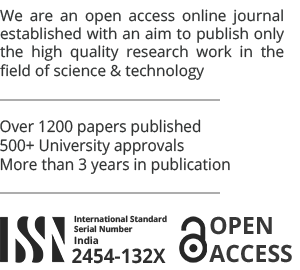This paper is published in Volume-11, Issue-1, 2025
Area
Computer Engineering
Author
Yasser A. Ahmed
Org/Univ
Qassim University, Saudi Arabia, Saudi Arabia
Keywords
Current Measurement, Current Sensor, Current Testing, IC Testing, I_DQQ testing, Physical Defects, Test Vectors
Citations
IEEE
Yasser A. Ahmed. Differentiating Fault Current from Leakage Current during IC Testing, International Journal of Advance Research, Ideas and Innovations in Technology, www.IJARIIT.com.
APA
Yasser A. Ahmed (2025). Differentiating Fault Current from Leakage Current during IC Testing. International Journal of Advance Research, Ideas and Innovations in Technology, 11(1) www.IJARIIT.com.
MLA
Yasser A. Ahmed. "Differentiating Fault Current from Leakage Current during IC Testing." International Journal of Advance Research, Ideas and Innovations in Technology 11.1 (2025). www.IJARIIT.com.
Yasser A. Ahmed. Differentiating Fault Current from Leakage Current during IC Testing, International Journal of Advance Research, Ideas and Innovations in Technology, www.IJARIIT.com.
APA
Yasser A. Ahmed (2025). Differentiating Fault Current from Leakage Current during IC Testing. International Journal of Advance Research, Ideas and Innovations in Technology, 11(1) www.IJARIIT.com.
MLA
Yasser A. Ahmed. "Differentiating Fault Current from Leakage Current during IC Testing." International Journal of Advance Research, Ideas and Innovations in Technology 11.1 (2025). www.IJARIIT.com.
Abstract
Differentiating Fault Current from Leakage Current During IC Testing As integrated circuit technology advances, the intricacies related to fault identification and leakage current evaluation have increased markedly. Although conventional I_DDQ (quiescent supply current) testing protocols exhibit effectiveness in detecting major defects, they often struggle to distinguish between typical leakage currents and those reflective of genuine faults, thereby prolonging testing durations. Consequently, current sensors typically initiate measurements once transitions are finalized. In this investigation, we utilize a simulation technique to corroborate the effectiveness of an innovative methodology articulated in [1], which can be used to improve the throughput of the current testing process by detecting the faults using AC components of the current, thereby overcoming a constraint of traditional methods.

